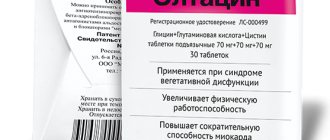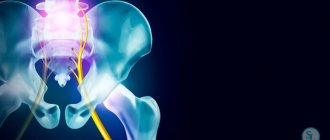Causes of ganglionitis of the pterygopalatine ganglion
The pterygopalatine node can be affected due to inflammatory processes in the sinuses of the upper or lower jaw (osteomyelitis), the ethmoid labyrinth of the paranasal sinuses. The causes of this disease can also be toxic effects from tonsillitis, local damage (for example, foreign damage to the nose or its mucous membrane), the harmful effects of caries, and purulent otitis.
Any infectious foci in the oral cavity can become serious provocateurs of this disease. Provocateurs for the excitation of the disease are overwork or lack of sleep, loud annoying sounds of a constant nature, stress, alcohol abuse or smoking.
Inflammation of the pterygopalatine node can also be caused by maxillary tumors, both benign and malignant.
Symptoms of ganglionitis of the pterygopalatine ganglion
The disease lasts a long time (months or years), periodically severe exacerbations occur (especially in the autumn-spring period, when the immune system is weakened, after stress or excitement).
One of the first symptoms will be paroxysmal severe pain in half of the face, which is accompanied by a burning sensation and shooting. Mostly painful sensations occur in the eye, behind the eye, in the teeth, in the upper and lower jaws, in the bridge of the nose, tongue and palate. The pain syndrome can spread to the occipital area, parotid region, ear, neck, forearm, shoulder blades, even to the fingertips and hand area. The most painful sensations occur in the bridge of the nose and mastoid process. Depending on the severity and duration of the disease, pain may be present for several hours, days or even weeks. Exacerbation of pain syndrome often occurs at night. Patients report sensations of tickling in the nose, sneezing, runny nose, active salivation, sweating, dizziness, nausea, and watery eyes.
A characteristic symptom of this disease is the so-called “vegetative storm”, which manifests itself in the form of swelling and redness of the face, profuse lacrimation and salivation, and shortness of breath. Moreover, saliva is often released so much that it involuntarily flows out of the patient’s mouth. The person is forced to use a towel. Sometimes there is an increase in temperature and secretion from the nose. In some cases, taste bud disorders and asthma-like attacks may occur. At the peak of attacks, the eyes become very sensitive not only to bright light, but also to lighting in general, swelling of the upper eyelid occurs, sometimes intraocular pressure increases and exophthalmos occurs. Often pain points are identified in the inner part of the corner of the eye, the root of the nose. In some cases, paresis of the muscle that raises the soft palate occurs.
Diagnosis of ganglionitis of the pterygopalatine ganglion
This disease is not easy to diagnose due to its similar clinical picture to other pathologies. For example, similar symptoms are observed in nasociliary nerve syndrome, Sicard syndrome, Charlin syndrome, migraine and temporal arteritis.
It is important to distinguish ganglionitis of the pterygopalatine ganglion from various types of facial neuralgia, in which shooting pain is also observed, but is not accompanied by nausea or vomiting. Changes in the mucous membrane of the paranasal sinuses are very similar to the clinical picture of rhinitis and sinusitis. To exclude these diseases, turundas soaked in a weak solution of cocaine, dicaine or novocaine are introduced into the nasal passages. A change in the nature of pain, its reduction, and partial normalization of autonomic functions can confirm the diagnosis of ganglionitis of the pterygopalatine ganglion.
The difficulty of diagnosing this disease is explained primarily by the fact that the pterygopalatine ganglion is associated with many nerve structures, which, when inflamed or excited, can give a wide variety of symptoms. When diagnosing this disease, the patient needs to consult several doctors, in addition to a neurologist - an otolaryngologist and a dentist.
Stendhal syndrome - symptoms and treatment
Stendhal syndrome is a pathological condition that includes a complex of mental and somatovegetative symptoms, such as panic, confusion, fainting, tachycardia, shortness of breath, etc., that occur when a person comes into contact with famous works of painting, architecture and other cultural values, as well as impressive natural phenomena and outstanding people.
This syndrome is not a generally recognized disease in the medical community, and the question of adding the diagnosis “Stendhal Syndrome” to international classifications remains controversial.
The most common manifestations of the syndrome are observed in the Italian city of Florence, which is the largest tourist center. It contains cultural masterpieces of world art of the Italian Renaissance. In this regard, this syndrome has another name - “Florentine”. It is believed that the works of Michelangelo, Raphael, Caravaggio, Brunelleschi and others, located in the Uffizi Gallery and other museums in Italy, have the most powerful impact on a person’s mental state, including the development of negative consequences [4][6][18].
“Stendhal’s cider” got its name thanks to the great classic of French literature, Stendhal, who was distinguished by his impressionability and sensitivity to art. In 1817, while still a young writer, he visited Florence and was shocked by the cultural and historical heritage of the city. After visiting the Basilica of the Holy Cross, which is decorated with delightful frescoes by the Italian sculptor Giotto and where such great Italians as Galileo, Michelangelo, Machiavelli and others are buried, he felt the unusualness of his condition and almost lost consciousness. In his book “Rome, Naples and Florence “He described it this way: “When I left the Church of the Holy Cross, my heart began to beat, it seemed to me that the source of life had dried up, I walked afraid of collapsing to the ground... I saw masterpieces of art generated by the energy of passion - after which everything became meaningless, small, limited - so, when the wind of passions has ceased to inflate the sails that push the human soul forward, then it becomes devoid of passions, and therefore vices and virtues” [5][8].
More than a century and a half later, Italian psychiatrist Graziella Magherini, who worked in the psychiatric department of the Santa Maria Nova Hospital in Florence, studied more than a hundred patients with symptoms including panic, tachycardia, fainting, hallucinations, etc., which arose during a tourist trip, visiting a gallery Uffizi and other museums in Florence. Remembering that the famous French writer had similar symptoms, she called this pathological condition “Stendhal syndrome.”
In her book, published in 1989, Magherini summarized her observations and made a number of interesting conclusions regarding the occurrence of this syndrome. Thus, the absence of this disorder among tourists from North America and Asia was explained by the presence of other radically different cultural traditions. In turn, Italians, immersed in the atmosphere of this high art since childhood, according to the psychiatrist, have a kind of protection against the development of these disorders. The most vulnerable are educated, impressionable young people 25-40 years old with a rich imagination, interested in art, but who do not have wide access to artistic paintings in everyday life.
The so-called “expectation phenomenon” can also play a certain role in the development of Stendhal syndrome. The discrepancy between expected expectations and received impressions of a work of art in particularly sensitive individuals may be a trigger for the development of Stendhal syndrome [15][17].
Treatment of ganglionitis of the pterygopalatine ganglion
- The first task of a neurologist in treating this disease will be to eliminate the inflammatory process in the nose, its paranasal sinuses, the oral cavity, and teeth. For this purpose, anti-inflammatory, ganglion blocking agents are used. This is 1 ml of a 2.5% benzohexonium solution intramuscularly, 5% pentamine. Injections are given three times a day for a month.
- After pain syndromes are eliminated, medications are prescribed to generally strengthen the patient’s body, for example, vitamins B1, B6, B12, aloe, vitreous (immunotherapy). Sedatives are also required.
- To relieve severe pain, if conservative therapy is ineffective, the anesthetics trimecaine or lycocaine are used. In this case, the injection is made directly into the palatine canal. If parasympathetic symptoms are observed in the clinical picture, platifilin and spasmolitin are prescribed. In some cases, the use of glucocorticoids or hydrocortisone phonophoresis is prescribed (physiotherapeutic treatment options).
- If the disease develops as a result of inflammatory processes, then anti-infective therapy is used in the form of antibiotics or sulfonamides. The background of treatment is desensitizing drugs (diphenhydramine, pipolfen).
- To improve the patient’s general well-being, vasodilating antisclerotic drugs are prescribed, and injections are given to improve cerebral and general circulation.
- In severe cases of the disease, radical treatment is used in the form of direct destruction of the pterygopalatine node.
This can be done in one of two ways:
- Puncture of the pterygopalatine canal from the oral cavity. This method is difficult to perform and can have serious consequences for the patient;
- Puncture of the pterygopalatine node in the pterygopalatine fossa with access from under the zygomatic arch. With this method, a solution of phenol in glycerin and a concentrated alcohol solution (96%) are injected into the pterygopalatine node.
Relapses of the disease do not always disappear as a result of treatment, but the clinical picture changes significantly. Many symptoms disappear or appear much less frequently. Treatment must be comprehensive, adequate and timely, only in this case a positive result is possible.
Dressler syndrome
Post-infarction syndrome (or Dressler syndrome) is a reactive autoimmune complication of myocardial infarction, developing 2-6 weeks after its onset.
Frequency of development
Dressler syndrome was originally thought to occur in approximately 4% of patients who have had a myocardial infarction. Taking into account atypical and asymptomatic forms, the frequency of its development is much higher – 15–23%, and according to some sources reaches 30%. However, in recent years the incidence of Dressler syndrome has decreased. The reasons may be the widespread use of non-steroidal anti-inflammatory drugs (acetylsalicylic acid) and the spread of reperfusion methods for treating MI, which reduce the amount of damage to the heart muscle. Another reason for the reduction in the incidence of Dressler's syndrome may be the inclusion of angiotensin-converting enzyme inhibitors, aldosterone antagonists and statins in the treatment of myocardial infarction due to their immunomodulatory and anti-inflammatory effects. Post-infarction syndrome develops in the subacute period (no earlier than the 10th day from the moment of illness) in 3-4% of patients who have suffered a myocardial infarction.
Reasons for development
The main cause of Dressler's syndrome is myocardial infarction. It is believed that Dressler's syndrome often develops after large-focal and complicated infarctions, as well as after bleeding into the pericardial cavity. Dressler's syndrome, more precisely post-cardiac injury syndrome, can develop after cardiac surgery (post-pericardiotomy syndrome, post-commissurotomy syndrome). In addition, typical signs of Dressler's syndrome may appear after other cardiac injuries (wound, contusion, non-penetrating blow to the chest, catheter ablation). Currently, Dressler's syndrome is considered an autoimmune process caused by autosensitization to myocardial and pericardial antigens. A certain importance is also attached to the antigenic properties of the blood entering the pericardial cavity.
In post-infarction syndrome, antibodies to heart tissue are constantly detected. When analyzing lymphocyte subpopulations in patients with Dressler syndrome, an increase in the number of activated CD8-positive cells was found. When studying complement activation, it was noted that in patients with diabetes, an increased level of the C3d fraction was observed in combination with a lower concentration of C3. Cardiac reactive antibodies, by binding to circulating cardiac antigens to form soluble immune complexes, can become fixed in various locations, leading to complement-mediated tissue damage.
In post-infarction syndrome, changes in cellular immunity are also observed. Thus, there is evidence that in Dressler syndrome the level of cytotoxic T cells is significantly increased. The etiological factor of Dressler's syndrome may be an infection, in particular a viral one, since in patients who developed this syndrome after cardiac surgery, an increase in the titer of antiviral antibodies is often recorded.
Symptoms and course
It develops in the 2-4th week of myocardial infarction, but these periods can decrease - “early Dressler syndrome” and increase to several months, “late Dressler syndrome”. Sometimes the course of Dressler's syndrome takes on an aggressive and protracted nature; it can last months and years, occurring with remissions and exacerbations. The main clinical manifestations of the syndrome are fever, pericarditis, pleurisy, pneumonitis and joint damage. Fever in Dressler syndrome does not have any strict pattern. As a rule, it is low-grade, although in some cases it may be febrile or absent altogether.
Pericarditis is an obligatory element of Dressler's syndrome. Clinically, it manifests itself as pain in the pericardial zone, which can radiate to the neck, shoulder, back, and abdominal cavity. The pain can be acute, paroxysmal (pleuritic) or pressing, squeezing (ischemic). It may get worse with breathing, coughing, swallowing and get better when standing upright or lying on your stomach. It is long-lasting and disappears or weakens after the appearance of inflammatory exudate in the pericardial cavity. The main auscultatory sign of pericarditis is a pericardial friction noise: on the first day of illness, with careful auscultation, it is detected in the absolute majority (up to 85%) of patients. The murmur is best heard at the left edge of the sternum, when the patient holds his breath and bends his torso forward. In the classic version, it consists of three components - atrial (determined in systole) and ventricular (systolic and diastolic). Like pain, the pericardial friction noise decreases or disappears altogether after the appearance of effusion in the pericardial cavity, pushing apart the rubbing pericardial sheets. Typically, pericarditis is not severe: after a few days the pain subsides, and exudate in the pericardial cavity almost never accumulates in such quantities as to impair blood circulation, although sometimes signs of severe cardiac tamponade may appear. Sometimes the inflammatory process in the pericardium in Dressler's syndrome takes on a protracted, recurrent nature and ends in the development of constrictive pericarditis. When anticoagulants are used against the background of Dressler's syndrome, the development of hemorrhagic pericarditis is also possible, although a similar complication can occur in the absence of anticoagulant therapy.
Pleurisy. It manifests itself as pain in the lateral parts of the chest, aggravated by breathing, difficulty breathing, pleural friction noise, dullness of percussion sound. It can be dry and exudative, unilateral and bilateral. Often, pleurisy is interlobar in nature and is not accompanied by typical physical symptoms.
Pneumonitis. Pneumonitis in Dressler syndrome is detected less frequently than pericarditis and pleurisy. If the focus of inflammation is large enough, dullness of percussion sound, weakened or harsh breathing, and the appearance of a focus of fine-bubble rales are also noted. Coughing and sputum production are possible, sometimes mixed with blood, which always causes certain diagnostic difficulties.
Joint damage. Dressler's syndrome is characterized by the appearance of the so-called “shoulder syndrome”: painful sensations in the area of the glenohumeral joints, usually on the left, and limited mobility of these joints. Involvement of the synovial membranes in the process often leads to pain in the large joints of the limbs.
Other manifestations. The manifestation of post-infarction syndrome may be heart failure due to diastolic dysfunction, hemorrhagic vasculitis and acute glomerulonephritis.
Research methods
Laboratory data. An increase in ESR and leukocytosis, as well as eosinophilia, are often observed. A sharp increase in the level of C-reactive protein is very characteristic. In patients with Dressler's syndrome, normal levels of markers of myocardial damage are recorded (MB-fraction of creatine phosphokinase (MB-CPK), myoglobin, troponins), although sometimes there is a slight increase in them, which requires differential diagnosis with recurrent myocardial infarction.
Electrocardiography (ECG). In the presence of pericarditis, the ECG shows diffuse ST segment elevation and, periodically, PR segment depression, with the exception of lead aVR, in which ST depression and PR elevation are observed. As exudate accumulates in the pericardial cavity, the amplitude of the QRS complex may decrease.
Echocardiography. When fluid accumulates in the pericardial cavity, separation of its leaves is detected and signs of cardiac tamponade may appear. Dressler's syndrome is not characterized by a large volume of fluid in the pericardial cavity - as a rule, the separation of the pericardial layers does not reach 10 mm in diastole.
Radiography. An accumulation of fluid in the pleural cavity, interlobar pleurisy, expansion of the boundaries of the cardiac shadow, and focal shadows in the lungs are detected.
Computed tomography or magnetic resonance imaging also reveals fluid in the pleural or pericardial cavity and pulmonary infiltration.
Pleural and pericardial puncture. Exudate extracted from the pleural cavity or pericardium can be serous or serous-hemorrhagic. A laboratory test reveals eosinophilia, leukocytosis and a high level of C-reactive protein.
Treatment
Non-steroidal anti-inflammatory drugs (NSAIDs). Ibuprofen (400–800 mg/day) is traditionally considered the drug of choice for Dressler syndrome. Aspirin is used less frequently. Surgical treatment is used for constrictive pericarditis.
Complications
Cardiac tamponade, hemorrhagic or constrictive pericarditis, coronary artery bypass graft occlusion (compression), and rarely anemia.
Forecast
The prognosis for Dressler syndrome is usually favorable. However, its course sometimes takes on a protracted, relapsing character. In addition, there is evidence that 5-year survival among survivors of this syndrome, although slightly, is reduced.









